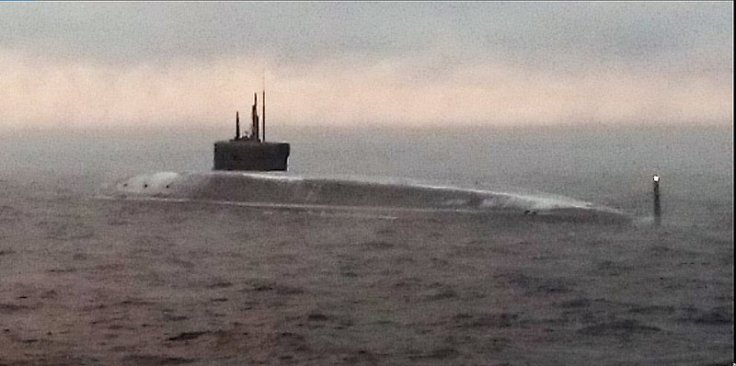During the Cold War until the late 1980s, almost thousands of radioactive objects were dumped into Russia's remote northern waters. While most of them present environmental risk, some of them are increasingly seen as a threat to the Arctic ecosystem now.
One of the Russian submarines, K-159, was decommissioned in 1989 and had been rusting in a submarine graveyard at the former Soviet naval base at Gremikha and it sank to a depth of more than 500 feet, about three miles northwest of Kildin Island off the Kola Peninsula in the northern side of Russia. This submarine lies just outside of the Russian city Murmansk in the Barents Sea, the richest cod fishery in the world with its reactors still containing radioactive material.
The nuclear submarine that sank in the Barents Sea in 2003 along with 800 kilograms of uranium in its reactors is not putting out dangerous levels of radiation, but as per Norwegian Radiation Protection Authority, it needs to be monitored continuously as this place, where it is situated now, is an important habitat of haddock, red king crab, polar bears, walruses, whales, and many other animals. But as per the experts, K-159 is not the only wreck that can pose a threat to marine life.

Investigation
Norwegian–Russian authorities launched a joint expedition to the Barents Sea in 2014 to investigate the sunken nuclear submarine K-159. The purpose of the mission was to gain information about the physical condition of the wreck and investigate the levels of radioactive pollution in the marine environment.
Video footage from the expedition showed that the nuclear submarine has been lying upright on the seabed with the deck of the submarine covered in a layer of sediment. The team also observed several different fish species and other biotas around K-159. However, during the investigation, the team noticed that on the outer hull, a number of hatches were missing and some damage to the deck and stern. The measurements conducted during the joint expedition revealed that the radiation levels around K-159 were low and typical for the Barents Sea.
Understanding the risk factors of keeping such vulnerable wrecks underwater, for a long time, that can pose a huge threat to marine life and the ecosystem, Russian state atomic energy corporation Rosatom has come up with a plan to remove the most dangerous radioactive items from the country's Arctic seafloor.
As reported by TASS recently, the six most radioactive items will be removed from the seafloor over the next eight years. It was reported that the objects create 90 percent of the background radiation in the Russian Arctic. As per a spokesperson for the Russian state atomic energy corporation, these include reactors with nuclear fuel from the submarines K-11, K-19, and K-140, the intact subs K-27 and K-159, all of which went down filled with their uranium fuel.
The authority would raise spent nuclear fuel from the Lenin nuclear icebreaker that was dumped in Arctic waters. Most of this debris was scuttled intentionally by the Soviet Navy before the 1990s before the international laws forbid the dumping of radioactive waste at sea.
The Threat: Radioactive Waste

As per Russia's Emergency Services Ministry, around 18,000 pieces of radioactive litter have been left in the depths of the Barents and Kara seas off the coast of Murmansk. Russian government released a catalog in 2012 which revealed that these already found materials include 17,000 containers of radioactive waste, 19 ships containing radioactive waste, 14 nuclear reactors, including five still loaded with spent nuclear fuel, and 735 other pieces of radioactively contaminated heavy machinery.
The Nuclear Safety Institute of Russian Academy of Sciences or IBRAE said that there are 1,000 such underwater wrecks that continue to pose high risks of radioactive contamination, mainly K-159 and the K-27.
Marine Chernobyl?
Since K-159 lies in the midst of fertile international fishing waters in the Kara Sea, it can cause a devastating situation like Chernobyl, if the marine life gets exposed to a radiation leak. Experts said if such situation occurs, fishing would be banned in the area for at least a month, costing the Russian and Norwegian economies about $120 million.
K-159 and K-27, which used to be known as the "golden fish" because of its high cost, together contain one million curies of radiation or about a quarter of that released in the first month of the Fukushima disaster. The K-27 was sunk after some safety measures were installed that should keep the wreck safe until 2032.
Many experts are now demanding K-27 to be retrieved first, as they believe its reactors could be in danger of generating an uncontrolled nuclear chain reaction. Thomas Nilsen, the editor of The Barents Observer online newspaper, describes these two submarines as a "Chernobyl in slow motion on the seabed".
Andrei Zolotkov, head of Bellona's Murmansk office, said that the huge number of nuclear refuses dumped during the Soviet era has become less radioactive over time, but items that contain spent nuclear fuel, like the submarines and the other dumped reactors, should be taken out of the water first.
Most of these radiation hazards are located in the eastern bays of the Kara Sea close to the Novaya Zemlya Archipelago, but the exact location of some of these objects is still unknown.









